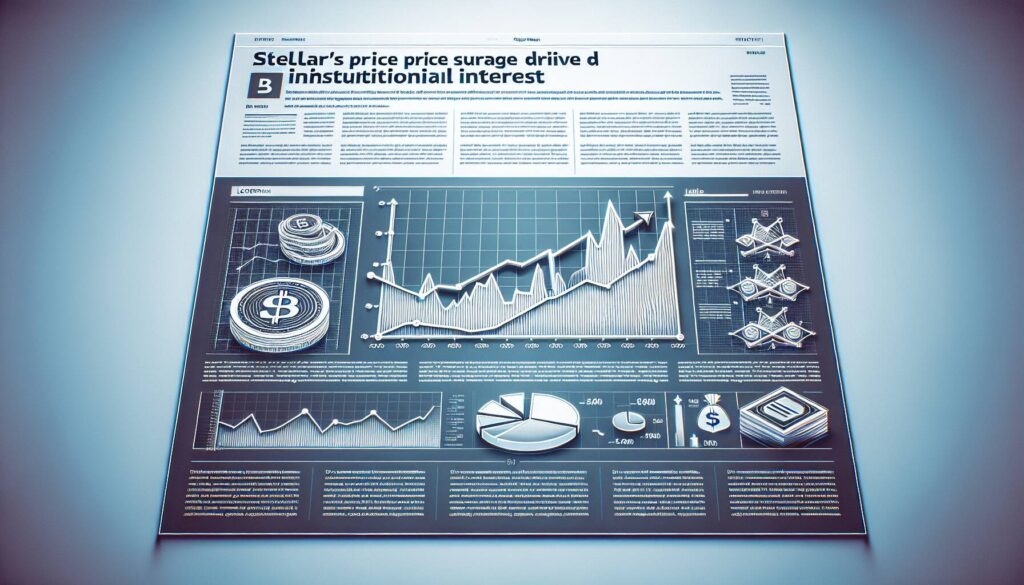Stellar’s native token, XLM, has experienced significant volatility over the past day, witnessing a notable decline from a session high of $0.398 to a low of $0.380. This sharp 5% dip came as heavy selling dominated the market, particularly on August 25 at 19:00 UTC, when a sudden plunge saw the price drop from $0.393 to $0.387. This movement was accompanied by a surge in trading activity, with 46.16 million tokens exchanging hands, highlighting the psychological barrier at $0.393 that may prove challenging for the bulls to overcome.
Despite the pressures, the token notably rebounded slightly towards the end of the session, closing at $0.389, which underscores a resilient demand at the $0.380 support level—an essential line for bullish traders.
Market sentiment surrounding XLM is also influenced by broader industry developments, including a new U.S.-based crypto ETF filing aimed at promoting domestic digital assets like Stellar. This could potentially attract more institutional investment into the space. Traders are observing a critical resistance zone near $0.50, as technical patterns indicate XLM is poised for a possible breakout should momentum shift back in favor of buyers.
The recent trading activity illustrates a tense battle in the market. Between 07:20 and 08:19 UTC on August 26, XLM fluctuated within a narrow range of $0.387 to $0.392, achieving a modest gain of 0.18% from the day’s open. Although high-volume buying initiated a brief rally, profit-taking has tempered this upward momentum. The trading volume surged by 115% during the day, totaling $402 million, further illustrating the ongoing conflict between intense selling pressure and the accumulation efforts of larger investors.
With a stated price range of 5% between its highest and lowest points, XLM’s market dynamics reflect intense trading activity and the wariness that permeates the cryptocurrency landscape.

Stellar’s XLM Price Dynamics Analysis
Key points regarding the recent trading activity of Stellar’s native token, XLM:
- Significant Price Drop: XLM fell from $0.398 to a low of $0.380, showcasing a 5% swing driven by heavy selling pressure.
- Critical Resistance Zone: The price point of $0.393 has been established as a major resistance level, confirmed by 46.16 million tokens trading hands.
- Support Level Established: The $0.380 support level has been fortified as a significant defense point, validated by a peak trading volume of 95.27 million tokens.
- Market Sentiment Influences: Developments such as a U.S.-based crypto ETF targeting digital assets, including Stellar, could attract new institutional investments.
- Potential Breakout Scenario: XLM is coiling beneath a critical resistance level near $0.50, suggesting a possible breakout if buying momentum resumes.
- High Volatility: The token has exhibited a 5% volatility range in a 24-hour period, indicating a battleground scenario driven by both buy and sell-side activity.
- Intraday Trading Actions: Between 07:20 and 08:19 UTC on Aug. 26, XLM saw limited movement within a narrow band, demonstrating a brief rally capped by profit-taking despite high trading volumes.
The current trading dynamics and market developments surrounding XLM can significantly impact investors’ strategies, highlighting the need for close monitoring of resistance and support levels, as well as broader market sentiment shifts.
Stellar’s XLM: Navigating Volatility Amid Institutional Interest
The recent trading fluctuations of Stellar’s native token, XLM, exemplify the current volatility in the cryptocurrency market. After experiencing a notable price drop, XLM managed to recover slightly, showcasing the inherent resilience of buyers at crucial support levels. This resilience is vital in a market context where volatility reigns supreme, particularly when a significant $0.380 support threshold has been established amidst heavy sell-side activities.
Comparatively, similar digital assets are also contending with their own market pressures. Tokens like Cardano (ADA) and Ripple (XRP) have faced resistance levels that similarly impact the sentiment of their respective investors. However, unlike XLM, which saw a dramatic spike in trading volume that confirmed its support level, ADA has not experienced the same level of accumulation by larger investors. This discrepancy gives XLM a competitive edge, as the increased interest from institutional players could mean a more sustainable buyer base for Stellar.
One of the notable advantages for Stellar lies in the pivot towards institutional investments. The filing of a U.S. crypto ETF that highlights domestic digital assets may attract new capital flows towards Stellar, particularly as it seeks to navigate its technical resistance near $0.50. This potential influx could provide a much-needed boost, differentiating it from assets that lack such institutional backing.
However, the intense sell pressure and the struggle to maintain momentum could pose challenges as well. The significant profit-taking observed after minor rallies suggests that short-term traders may be effectively capping XLM’s price increases, creating an environment of uncertainty. This turmoil might deter risk-averse investors who prefer stability, placing the token at a disadvantage compared to steadier investments in the crypto space.
XLM’s current trajectory not only serves traders betting on price movements but could also invite cautious retail investors seeking to enter the market at strategic support levels. Conversely, those unwilling to endure the high volatility may find themselves frustrated by the sudden swings and profit-taking dynamics characteristic of XLM’s recent trading sessions. As Stellar navigates through this critical phase, understanding these market dynamics will be essential for stakeholders aiming to capitalize on its potential recovery and growth opportunities.
















